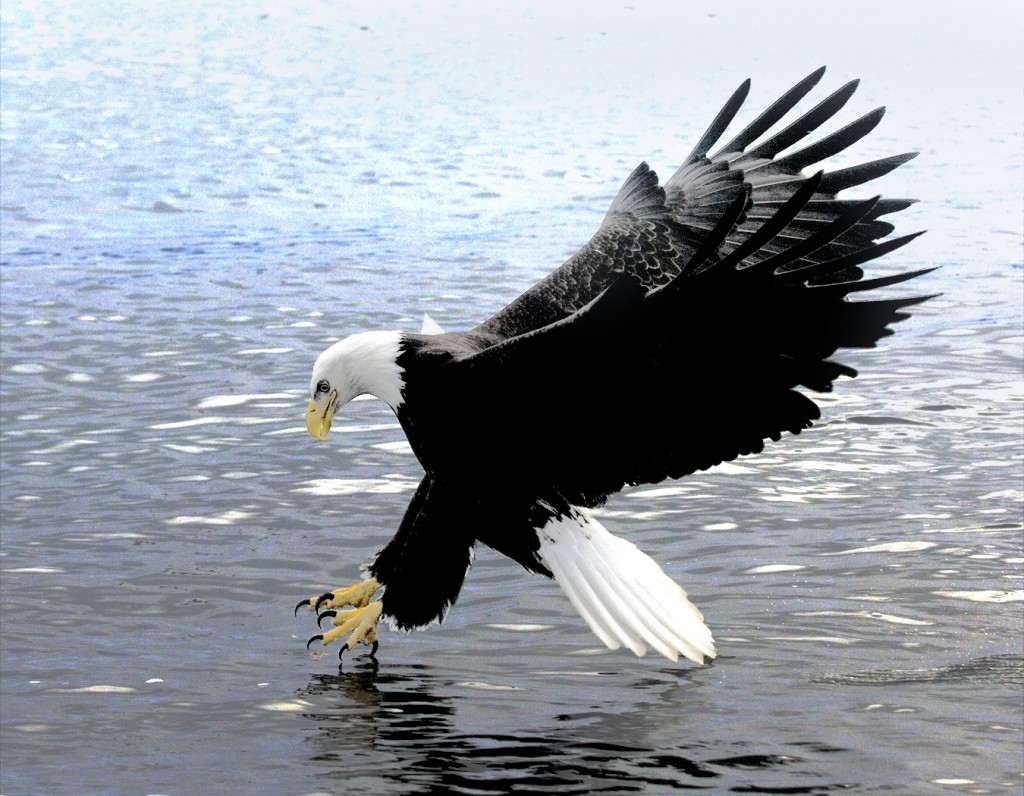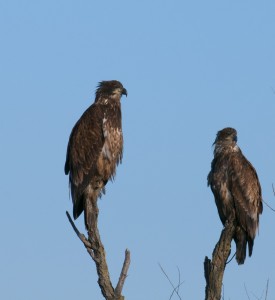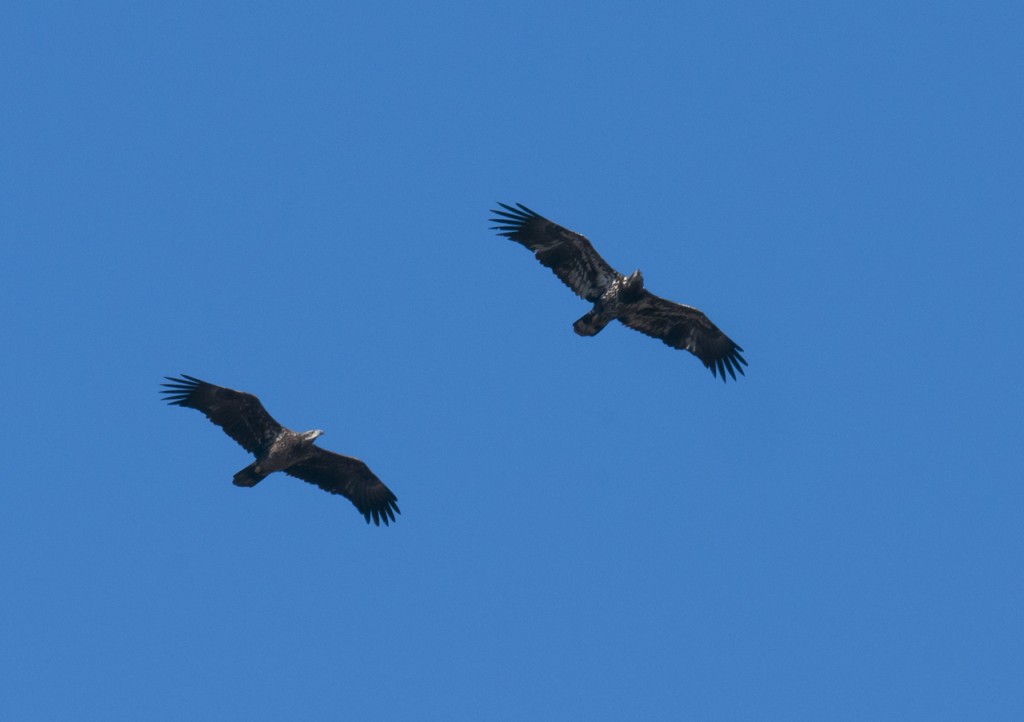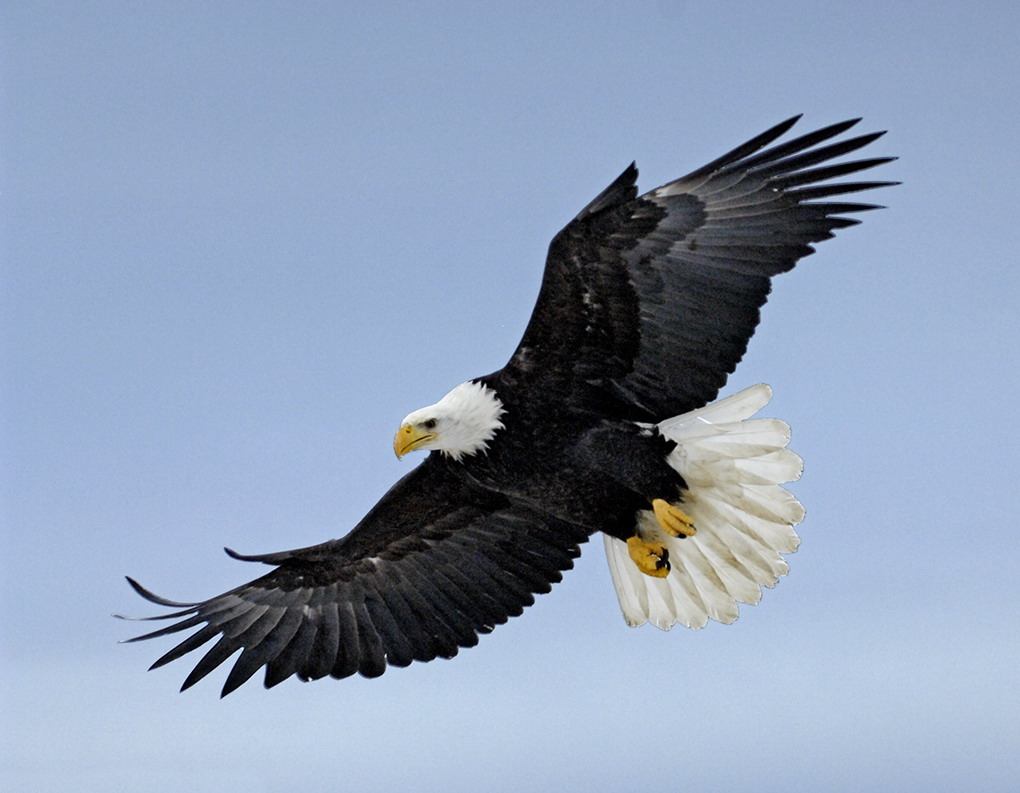A Gathering of Eagles
The bottoms are abuzz with reports of large concentrations of Bald Eagles along Levee Road. Nothing seems to capture the imagination and excitement of Monroe Countians like a gathering of eagles. 2010 was a remarkable year for eagle watchers in our area and the numbers seen so far this year indicate that 2011 may be an even better year to see these magnificent birds.
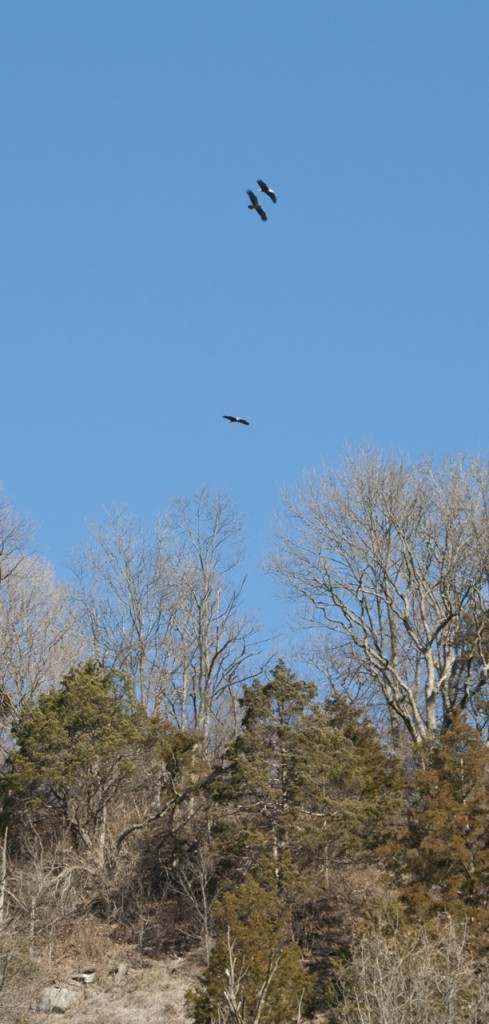
Adult and Immature eagles soar on thermals over Fults Hill Prairie Nature Preserve. Tom Rollins, Thomas Rollins Photography.
Winter is the social season for eagles, with convocations gathering to feed and roost communally along the Mississippi River. The birds seen here are not long-range migrants, with most born and living out their 30-year life spans within a 20 or so mile distance up or down the river.
Social hierarchies develop during their winter gatherings, with the oldest, most aggressive eagles occupying the highest perches. During their winter conclave, five and six-year old eagles may form their first durable mated pair bonds. Most eagles mate for life.
Bald eagle females are always larger than males. Immature eagles are various shades of brown, with heads and under wings mottled various densities of white and brown as they age. Immature eagles are larger than adults, owing to longer wing and tail feathers. Young eagles do not attain the full adult feathering – the distinctive white heads and tails — until they are four years old.
In these parts, eagle nesting usually begins in April. Eagle nests, normally used for decades, are imposing structures of sticks and branches, often 5-6 feet in diameter, with the largest ever recorded nearly 10 feet across.
Female eagles usually lay 2, sometimes 3, bluish-white eggs — about 3″ long and 2″ wide– over several day intervals. Both males and females alternate incubating the eggs for 35-45 days. Young nestlings are tended by both parents. The first born often kills or starves its sibling(s). Newborns gain feathers in about 5 weeks, and can fly and leave the nest in 11 weeks, but usually return to their nests to feed and rest.
For fledgling eagles, flying from the nest is easier than landing. They tumble and crash, until learning distance, maneuver, and clasping. By late spring, they are on their own, but usually hang around in extended family units for several years until they begin breeding. While eagles have few predators, only 4 in 10 juveniles make it to adulthood.
Eagles are opportunistic feeders. While their main diet is fish, they will eat waterfowl, rabbits, mice and other small rodents, and carrion. Eagles are famous for being lazy feeders and often prefer to steal another animal’s food. An eagle must consume about 10% of its body weight, a pound or so of food, a day to survive. A seemingly big adult eagle, with a 7-foot wingspan, only weighs 10-14 pounds. An adult eagle can lift and carry only about 4 pounds.
The Bald Eagle has only recently become a familiar sight again in the county and throughout the contiguous 48 states of the U.S. Over- hunting and the wide-scale use of certain pesticides after World War II brought a dramatic decline in eagle populations. By 1970, only 791 pairs were estimated to be breeding in the lower 48 states. Eagle and raptor hunting was a fairly common practice as many people thought that control of any and all predator species would increase available game for people; countless birds of prey were slaughtered for sport. While the Bald Eagle Act, passed by Congress in 1940, prohibits their killing, illegal shooting still occurs.
Pesticide contamination now is minimal among Bald Eagle populations in the U.S. Organochlorine (DDT) and carbamate pesticides were widely used to control insects on crop and forestlands from 1946 into the 1970s. These groups of pesticides undergo chemical transformations in animals and increase in tissue concentrations as animals consume other animals exposed to the chemicals. Plants, insects, spiders and other critters exposed to the pesticides were consumed by birds, fish, or other animals. These animals, in turn, became food for eagles and raptors and both toxicity and concentration of poisons increased with each swallow on up the food chain. The metabolized pesticide compounds did not kill adult birds but made females less able to produce calcium. Females then produced eggs so thinly shelled that the weight of the incubating birds simply crushed and destroyed them.
While the recovery of Bald Eagles certainly is a remarkable conservation success story, they and all raptors still suffer significant human-created mortality, including electrocution, collisions with vehicles and towers, entanglement with fishing lines and assorted garbage, poisoning from ingesting lead shot and fishing sinkers, and entrapment in leg-hold traps set for fur-bearers.
Banning of DDT biocides in 1972 and passage of the Endangered Species Act in 1973 enabled eagles to turn a crucial corner and begin recovering their population numbers. In 1982, five breeding pairs lived in Illinois. In 1996, 23 pairs were tallied in the state. A statewide winter survey in 2008 found 4,292 Bald Eagles in Illinois, 40% of which were immature birds. Slightly over 100 breeding pairs were found in the state in 2009. Currently, a minimum of eight pairs is believed to be breeding in Monroe County.
The American bald eagle’s slow climb from near extinction has sparked national interest and support for its recovery. Eagle watching has now become a favorite wintertime pastime. If you are lucky enough to be in Great Outdoors Monroe County, you don’t have to go very far to find a gathering of eagles.
Among the best spots for viewing our eagles is along Levee Road, where large gatherings of roosting birds may often be easily spotted near Harrisonville and near Kidd Lake Marsh. Hikers in our bluff lands find the vantage points of Salt Lick Point Land and Water Reserve, White Rock Nature Preserve, and Fults Hill Prairie Nature Preserve offer unique viewing: the ability to look down on soaring eagles. But even in-town residents can occasionally spot eagles as two immatures recently offered a dramatic series of in-flight talon-grasping play as they soared over State Highway 3 between Columbia and Waterloo.
Clifftop, a local nonprofit organization, is focused on preserving and protecting area bluff lands.
A version of this article appeared in the February 4 2011 edition of the Monroe County Independent.
© 2011 all content rights reserved, Clifftop NFP.
Comments are currently closed.

